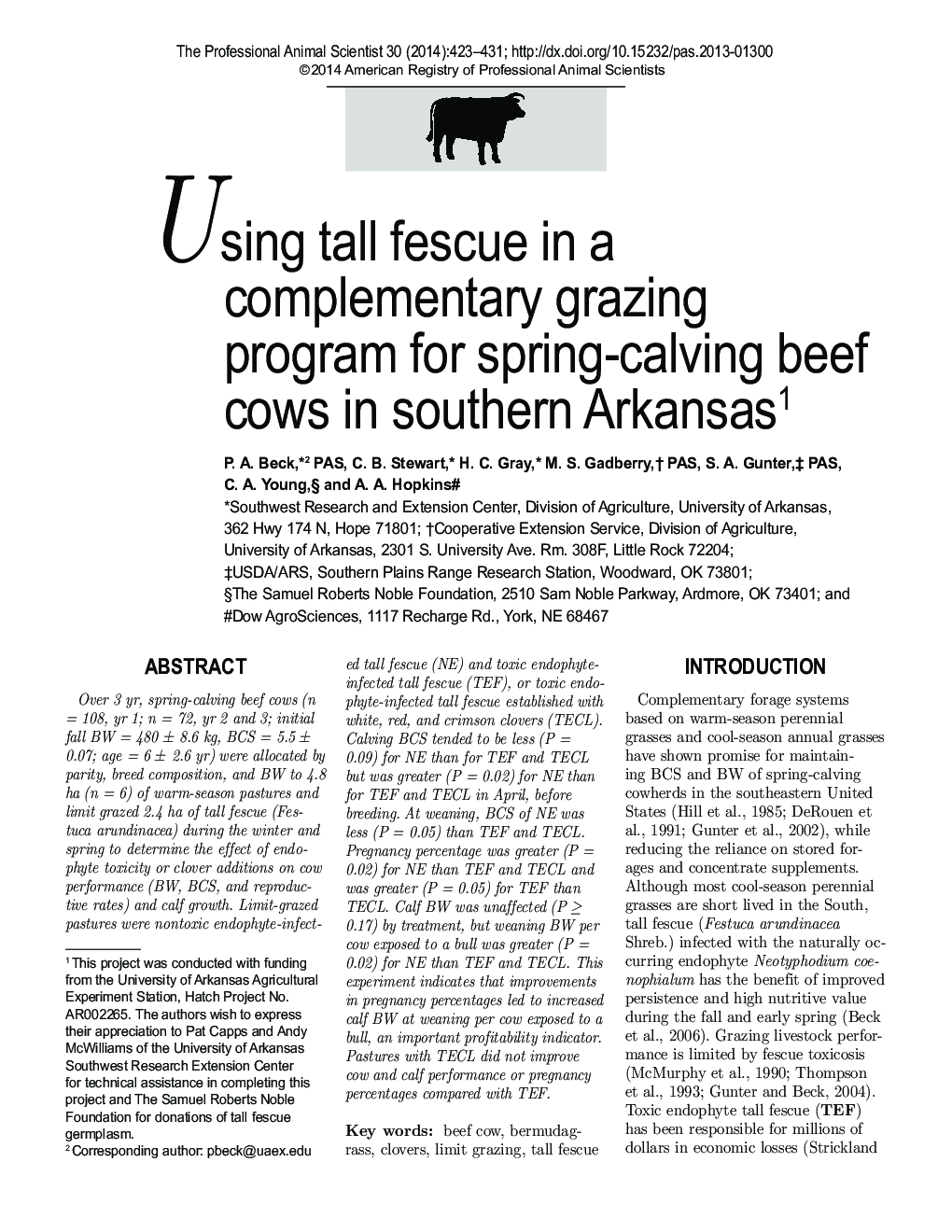| Article ID | Journal | Published Year | Pages | File Type |
|---|---|---|---|---|
| 2453866 | The Professional Animal Scientist | 2014 | 9 Pages |
Abstract
Over 3 yr, spring-calving beef cows (n = 108, yr 1; n = 72, yr 2 and 3; initial fall BW = 480 ± 8.6 kg, BCS = 5.5 ± 0.07; age = 6 ± 2.6 yr) were allocated by parity, breed composition, and BW to 4.8 ha (n = 6) of warm-season pastures and limit grazed 2.4 ha of tall fescue (Festuca arundinacea) during the winter and spring to determine the effect of endophyte toxicity or clover additions on cow performance (BW, BCS, and reproductive rates) and calf growth. Limit-grazed pastures were nontoxic endophyte-infected tall fescue (NE) and toxic endophyte-infected tall fescue (TEF), or toxic endophyte-infected tall fescue established with white, red, and crimson clovers (TECL). Calving BCS tended to be less (P = 0.09) for NE than for TEF and TECL but was greater (P = 0.02) for NE than for TEF and TECL in April, before breeding. At weaning, BCS of NE was less (P = 0.05) than TEF and TECL. Pregnancy percentage was greater (P = 0.02) for NE than TEF and TECL and was greater (P = 0.05) for TEF than TECL. Calf BW was unaffected (P â¥Â 0.17) by treatment, but weaning BW per cow exposed to a bull was greater (P = 0.02) for NE than TEF and TECL. This experiment indicates that improvements in pregnancy percentages led to increased calf BW at weaning per cow exposed to a bull, an important profitability indicator. Pastures with TECL did not improve cow and calf performance or pregnancy percentages compared with TEF.
Keywords
Related Topics
Life Sciences
Agricultural and Biological Sciences
Animal Science and Zoology
Authors
P.A. PAS, C.B. Stewart, H.C. Gray, M.S. PAS, S.A. PAS, C.A. Young, A.A. Hopkins,
